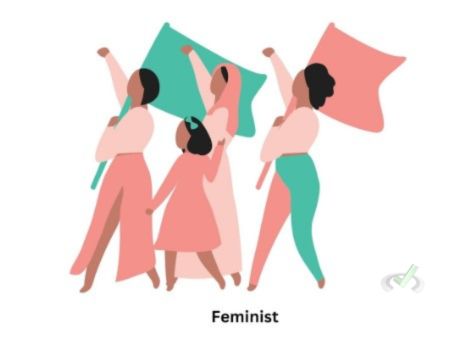Sociology helps us understand how people interact in societies and how those societies function. By exploring different theories, we can better grasp the complex behaviors and structures within societies. Let's explore some major sociological theories.
I. Functionalism
Functionalism is like viewing society as a machine with many parts. Each part has a role in keeping the whole system running smoothly. Emile Durkheim is one of the leading thinkers behind this theory.
Key Points
- Society as an Organism: Think of society like a body. Each part (like the heart, lungs, and brain) has a job that keeps the body alive and healthy.
- Social Institutions: Important parts of society, like family, schools, and religion, help keep everything stable.
- Equilibrium: Functionalists believe that when something disturbs society, it will eventually return to stability, much like a body healing after an injury.
For example, consider the education system. Schools not only teach knowledge but also socialize children, preparing them for future roles in society. This helps maintain societal stability by ensuring that children become functional members of society.

Criticism
Functionalism has faced criticism for ignoring the inequalities and conflicts in society. It focuses too much on stability and can miss how institutions, like schools, might keep unfair systems in place. Critics also say it makes people seem like they have no power to change their society.
II. Conflict Theory
Conflict theory views society as a place where groups compete for resources and power. Karl Marx developed this theory, focusing on the struggles between different social classes.
Key Points
- Power and Inequality: Society is marked by power struggles between the bourgeoisie (the owners) and the proletariat (the workers).
- Social Change: Change happens when different groups compete and clash over resources and power.
- Critique of Capitalism: Marx argued that capitalism creates inequality and exploits workers.
For instance, in a workplace, conflict theory would examine how the interests of the employees (who want higher wages and better conditions) clash with those of the employers (who want to maximize profits).

Criticism
Conflict theory has been criticized for focusing too much on conflict and needing more on how societies work together. Some argue that it overlooks how people cooperate to create social stability.
III. Symbolic Interactionism
Symbolic interactionism looks at how people interact and communicate with each other. This theory, developed by George Herbert Mead and Herbert Blumer, focuses on small-scale interactions.
Key Points
- Symbols and Meanings: People use symbols (words, gestures, and objects) to communicate with shared meanings.
- Social Construction: Reality is created through our interactions with others.
- Self-Concept: Our sense of self is developed through our interactions with others.
For example, a wedding ring represents marriage and commitment. The meaning of this symbol is understood through social interactions and shared understandings.

Criticism
Symbolic interactionism can be seen as too focused on small-scale interactions and needs to focus more on larger social structures. Critics say it sometimes ignores the big picture of societal issues.
IV. Feminist Theory
Feminist theory examines how gender inequalities shape our social structures and individual experiences. It focuses on understanding and changing the power dynamics between genders.
Key Points
- Gender Inequality: Focuses on the power dynamics between genders and how society perpetuates male dominance.
- Intersectionality: Considers how different aspects of identity (such as race, class, and gender) intersect and impact experiences.
- Social Change: Advocates for changes to achieve gender equality.
For example, feminist theorists might study wage gaps between men and women and advocate for policies to ensure equal pay for equal work.

Criticism
Some critics argue that feminist theory can be too focused on gender and might overlook other important social factors like class and race. However, intersectional feminism addresses this by considering multiple aspects of identity.
V. Social Constructionism
Social constructionism suggests that social processes and interactions shape our understanding of reality. It emphasizes that concepts like race, gender, and class are created and maintained through societal norms and practices.
Key Points
- Constructed Reality: Concepts like race, gender, and class are not biologically inherent but are created through social interactions.
- Language and Communication: Language plays a crucial role in shaping our understanding of the world.
- Power and Knowledge: Those in power can influence what is accepted as knowledge or truth in society.
For instance, the concept of "childhood" varies across cultures and historical periods. It is not a fixed stage of life but a social construct influenced by cultural and societal norms.

Criticism
Enter your text here...
VI. Bridge/Overlap
Understanding these theories helps us see how they overlap and interact to explain complex social phenomena. Each theory offers a unique lens to view society but often intersects.
Social Institutions and Change
Functionalism and conflict theory both examine institutions like family but from different angles. Functionalism sees institutions as maintaining stability, while Conflict Theory sees them as sites of inequality and change.
Individual and Society
Both symbolic interactionism and social constructionism focus on the role of interactions in shaping society and the individual. They highlight how daily interactions construct social reality.
Social Institutions and Change
Functionalism and conflict theory examine institutions like family from different angles. Functionalism sees institutions as maintaining stability, while Conflict Theory sees them as sites of inequality and change.
Health and Medicine
Functionalism can explain the role of healthcare systems in maintaining societal stability. Conflict theory, however, can critique inequalities in access to healthcare and how they reflect broader societal power dynamics.
Culture and Society
Symbolic interactionism is essential for understanding how cultural symbols and meanings are created and maintained. Social constructionism explains how societal norms and values are constructed through social interactions.
VII. Wrap-Up/Key Terms
Understanding the major theories in sociology helps explain how societies function and change. Each theory provides a unique perspective on the relationship between individuals and society.
Key Terms:
- Functionalism: Society as a system with interconnected parts.
- Conflict Theory: Focus on power struggles and inequality.
- Symbolic Interactionism: Importance of symbols and interactions.
- Feminist Theory: Examines gender inequalities.
- Social Constructionism: Reality is socially constructed.
VIII. Practice Questions
Sample Practice Question 1
Which theory views society as a complex system with parts working together to promote stability?
A. Functionalism
B. Conflict Theory
C. Symbolic Interactionism
D. Feminist Theory
Ans. A
Functionalism sees society as a system where different parts work together to maintain stability.
Sample Practice Question 2
Which theory focuses on power struggles and social inequality?
A. Functionalism
B. Conflict Theory
C. Feminist Theory
D. Social Constructionism
Ans. B
Conflict Theory examines how different groups compete for resources and power, highlighting social inequalities.







 To help you achieve your goal MCAT score, we take turns hosting these
To help you achieve your goal MCAT score, we take turns hosting these 





















 reviews on TrustPilot
reviews on TrustPilot